SkyMap Aviation Academy
Developed SkyMap Aviation’s website, enhancing their online presence to attract and educate aspiring pilots.
I am a bilingual Digital Transformation Analyst with a background in Business Administration. I specialize in UX design, web development, photography, and videography. I help businesses solve design challenges and create better user experiences. A quick learner who respects deadlines and is motivated to create engaging digital solutions.
I am a bilingual Digital Transformation Analyst with a background in Business Administration. I specialize in UX design, web development, photography, and videography. I help businesses solve design challenges and create better user experiences. A quick learner who respects deadlines and is motivated to create engaging digital solutions.

Developed SkyMap Aviation’s website, enhancing their online presence to attract and educate aspiring pilots.
As part of a collaborative team project in our college program, we undertook a comprehensive rebranding and website development initiative for SkyMap Aviation, a distinguished flight training institution in Canada. Our objective was to modernize their digital presence and enhance user experience (UX) through strategic design and development.
We crafted a new logo that encapsulates SkyMap Aviation’s mission and values, ensuring it resonates with their target audience.
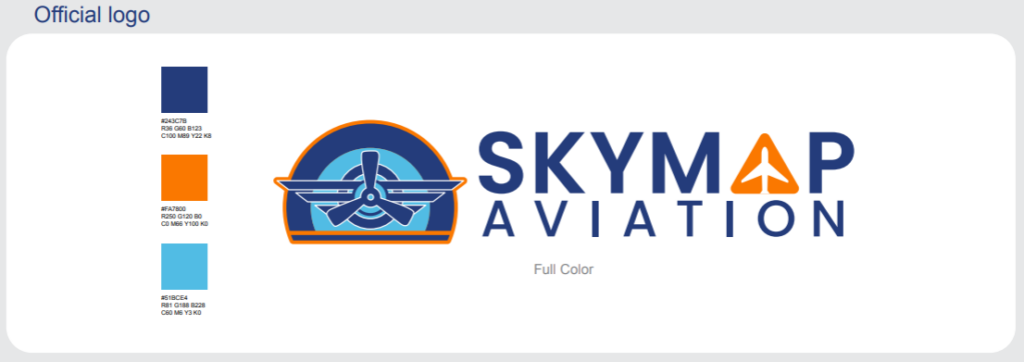

Through the creation of mood boards and user personas, we gained insights into user needs and preferences, which informed the design of wireframes and prototypes. This process allowed us to structure the website intuitively, enhancing navigation and accessibility.

Utilizing WordPress and Elementor, we developed a responsive and visually appealing website. The platform’s flexibility enabled us to implement custom designs and functionalities that align with SkyMap Aviation’s brand identity and cater to user needs effectively.

This project not only refined SkyMap Aviation’s brand image but also significantly improved their online user engagement through thoughtful design and development.
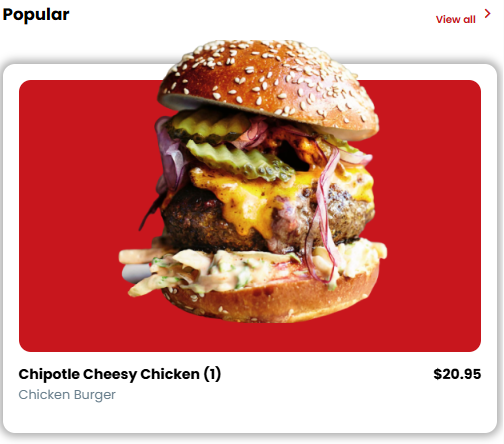
Developed a responsive food ordering interface with dynamic UI components and modern mobile-first design principles.
This project is a fully responsive, front-end web application simulating a modern food ordering platform. Designed with a mobile-first approach, it emphasizes intuitive user interactions, clean UI patterns, and accessibility best practices.

Key Features:
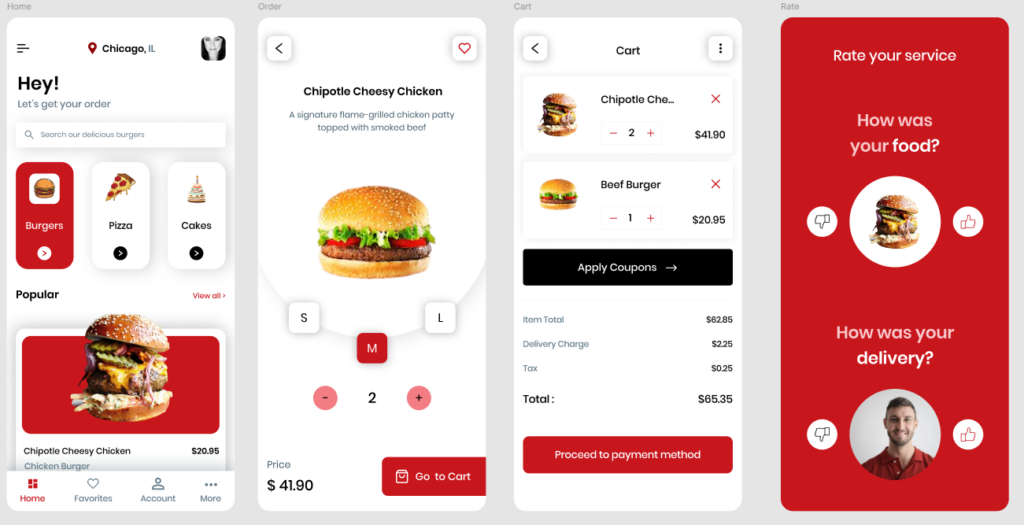
Tech Stack:
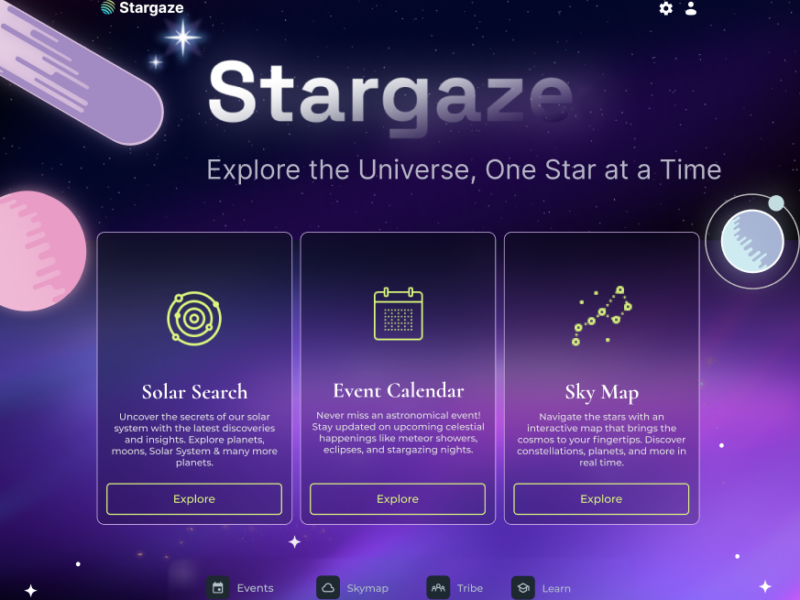
Designed the Events section of Stargaz, a mobile app crafted to help users plan, track, and relive stargazing experiences through an intuitive, visually immersive interface.
Stargaz is a mobile app created to help users plan, track, and enjoy stargazing experiences. This group project was part of our UX Design course, where we focused on creating a smooth and engaging user experience supported by a strong visual identity.

As a team, we developed detailed personas to better understand our target users and guide our design decisions. We also created a moodboard to explore the visual direction of the app. The branding reflects a dreamy, cosmic atmosphere with a purple-toned color palette, soft gradients, and calming visuals that match the peaceful nature of stargazing.

My main contribution to this project was designing the Events section of the app, which includes the Event Calendar, Upcoming Events, Reminders, Schedule, and Past Events pages. These screens allow users to easily view upcoming events, set reminders, manage their schedules, and look back at past experiences. I focused on consistency, accessibility, and simplicity to make the experience enjoyable for all users.
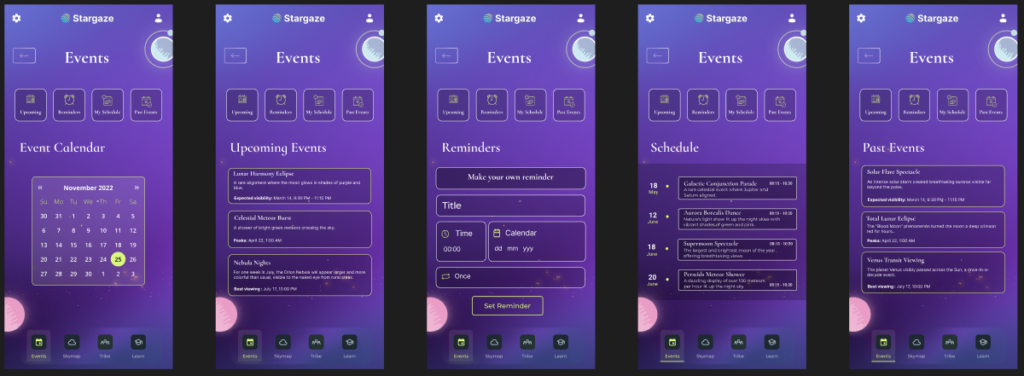
This project allowed me to apply core UX principles such as user research, visual storytelling, and interface design in a collaborative setting.
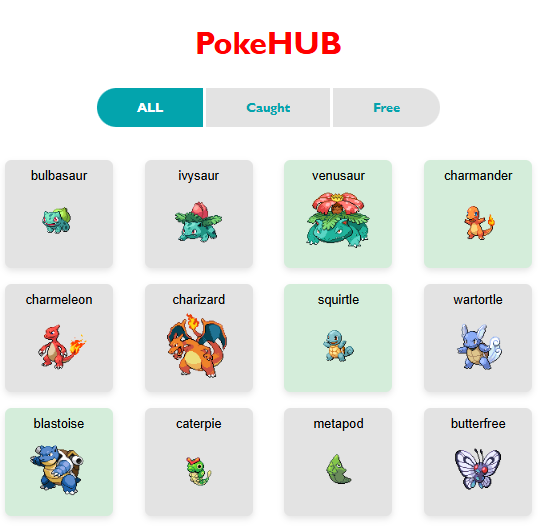
Designed the interface for PokeHub, a dynamic web app that fetches real-time Pokémon data from the PokeAPI and allows users to explore, catch, and manage their Pokémon collection.
PokeHub is an interactive web application that functions as a modern Pokédex, combining real-time data from the PokeAPI with a playful, user-friendly interface. The app enables users to browse, filter, and interact with Pokémon in an engaging, responsive environment.
My Role:
Led interface design—responsible for layout, component structure, visual hierarchy, and UX flow. Focused on accessibility, thematic consistency, and optimizing user interaction across screen sizes.



Core Features:
Technical Stack:
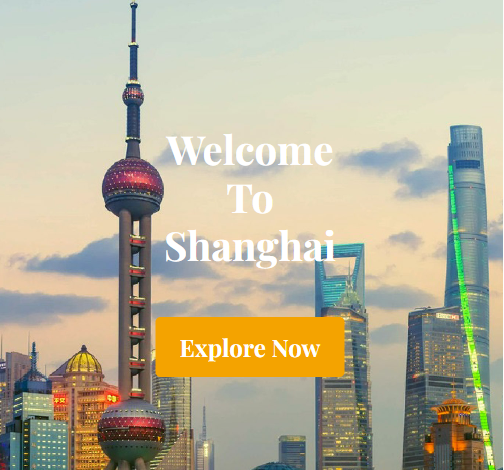
Co-developed Destination Shanghai, a custom WordPress site built from the ground up with PHP, HTML, CSS, and JavaScript to showcase Shanghai’s top attractions through a rich, interactive user experience.
Destination Shanghai is a fully custom-built WordPress website created to serve as a dynamic travel guide for visitors interested in exploring Shanghai. Designed and developed collaboratively, the project leverages a custom theme architecture to deliver modularity, performance, and full design flexibility.
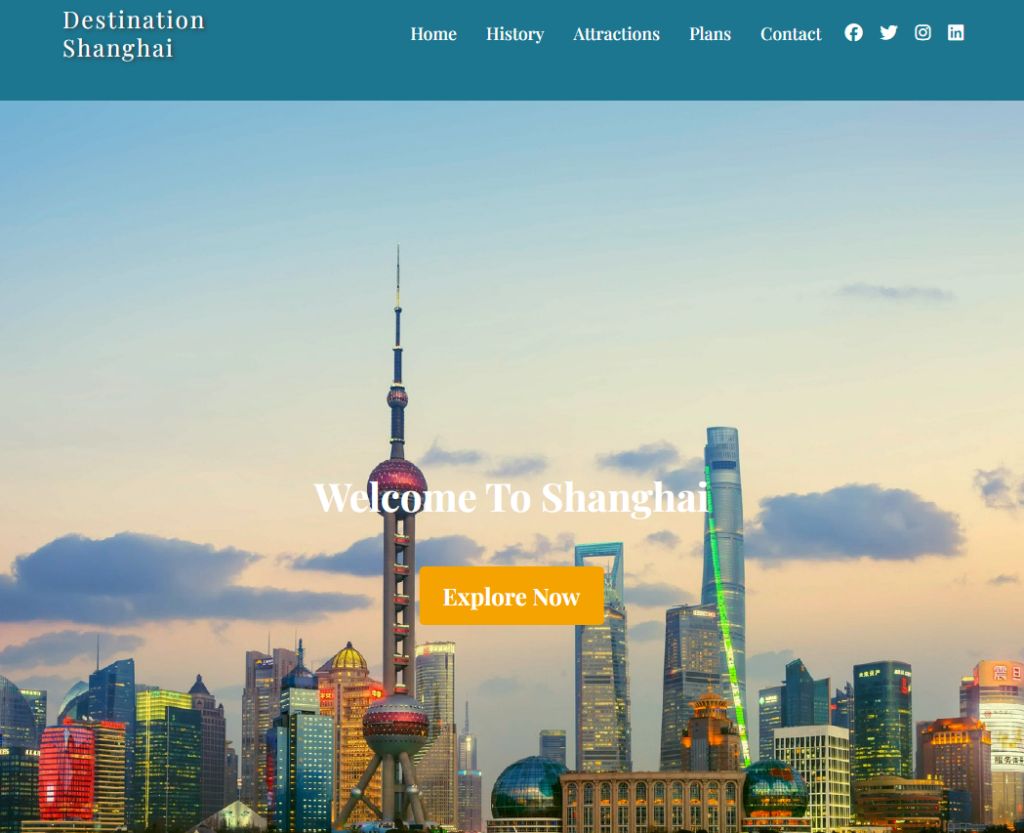
My Role in the Project:

Key Features:

Technical Stack:
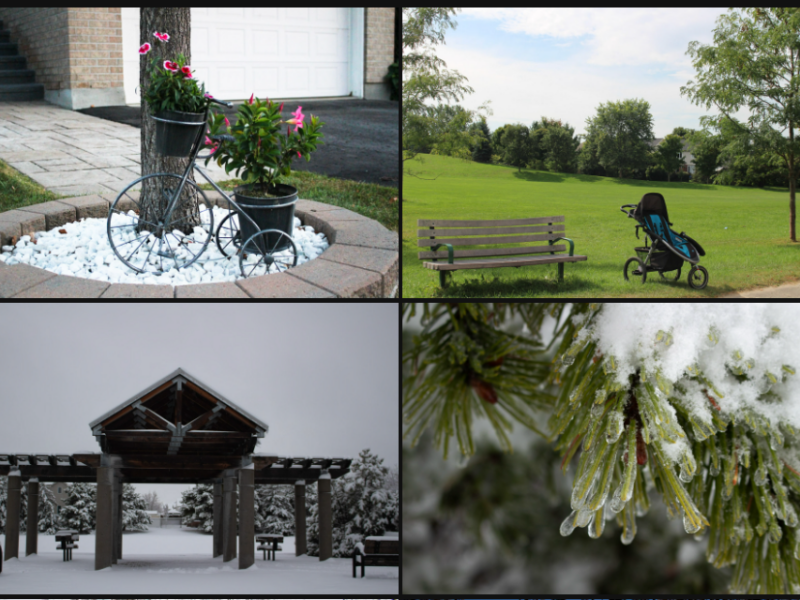
Showcasing expressive portraiture and narrative-driven photography with a refined visual style and emotional depth.
This portfolio showcases a curated selection of Hanane Gouhmid’s photography work, emphasizing storytelling, portraiture, and curated highlights from 2023. Each collection captures emotion, composition, and narrative with a distinct visual identity. From intimate portraits to dynamic, story-driven imagery, the work reflects a strong sense of atmosphere and technical control.
Featured Galleries:
A hands-on program focused on creative problem solving through digital media. Gained practical experience in: Graphic & UX/UI Design Web Development (HTML, CSS, JavaScript) Custom WordPress Theme Development Video Production & Editing Photography & Visual Storytelling Media Project Planning & Client Communication
A comprehensive program with a strong foundation in business principles, including: Marketing Management & Multimedia Marketing Financial Analysis & Planning Business Strategy & Development Communication & Organizational Leadership
Led a team in a real-world client project focused on branding and website design. Managed the full design process — from research and ideation to delivery — while providing creative and strategic solutions tailored to the client's goals. Gained practical experience in team leadership, project management, and client communication.
Developed and curated content for a personal blog and social media channels, focusing on creating engaging visuals and multimedia to enhance user interaction. Applied SEO techniques to increase online visibility and grow the audience, fostering a strong digital presence.

We live in a scroll-fast, attention-poor world. Words are slow. Visuals are instant. If you want to cut through the noise, don’t just say it – show it!

You could write three paragraphs explaining a concept… or you could drop one diagram and make your point in seconds.
The eye is quicker than the ear. If you want to be understood fast, speak in pictures.
Think In Layers: Clarity, Speed, Retention
| Goal | Visual Tool |
|---|---|
| Explain a process | Flowchart or timeline |
| Highlight comparison | Infographic or table |
| Show structure | Diagram or wireframe |
| Evoke emotion | Photo or illustration |
| Grab attention | Bold typography, GIF, or meme |
Refine only if it needs to be polished. Done > perfect.
Pick your message
Ask: What’s the fastest way to visualize this?
Sketch it. Even bad visuals beat good text in speed.
Final Thought:
Words are linear. Visuals are parallel. One image = multiple insights delivered at once. If you want to be heard, show them.

Becoming a successful writer isn’t about waiting for inspiration or chasing fame. It’s about craft, discipline, and a ruthless focus on value. Whether you want to write fiction, non-fiction, or technical work, here’s the unvarnished roadmap.
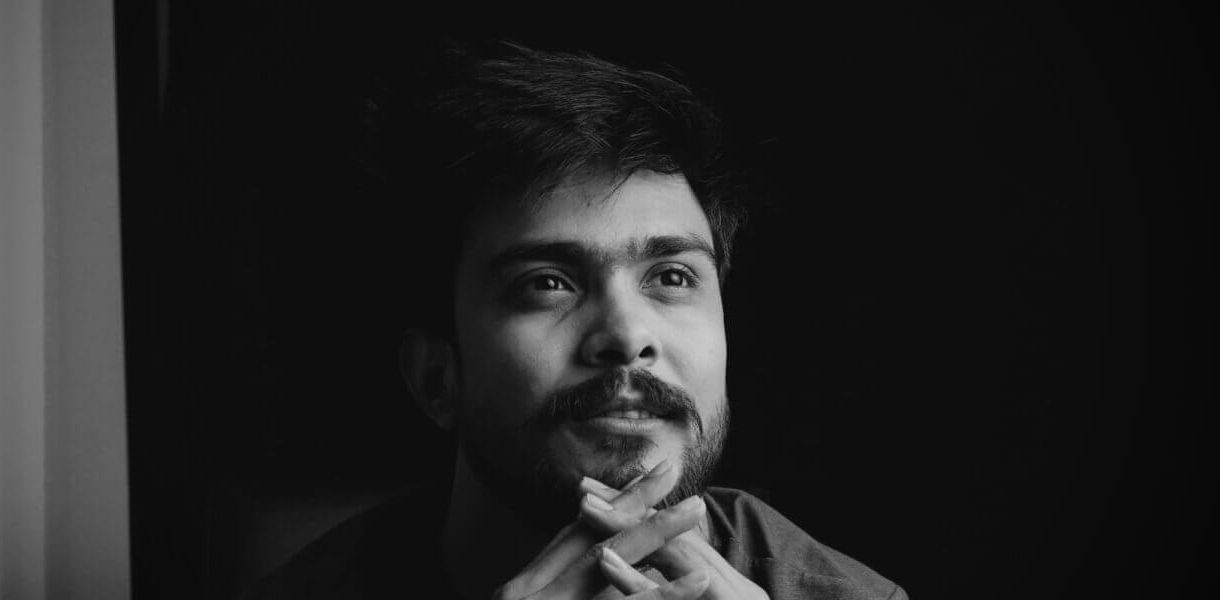
Success starts with consistency. The difference between a dreamer and a writer is word count. Build a routine. 500 words a day is 182,500 words a year. That’s two novels. No excuses.
Amateurs wait for inspiration; professionals sit down and get to work.
Steven Pressfield
Most wannabe authors write 10% of 10 books. Finish one. Then fix it. Then publish. Completion is a muscle. Train it.
Read to study, not to escape. Highlight structure. Analyze pacing. Dissect character arcs. If you’re not actively reverse-engineering what you read, you’re not learning.
The first draft is clay. The real writing happens in revision. Cut ruthlessly. Simplify. Clarify. Kill your darlings. Focus on clarity, not cleverness.
Writing is art. Publishing is business. Understand your market. Study what sells. Learn about self-publishing, agents, and platforms. Use tools like:
Scrivener (for drafting)
Grammarly (for clean copy)
Vellum or Atticus (for formatting)
Substack, Medium, Amazon KDP (for publishing)
You’re not just a writer—you’re a brand. Start a newsletter. Blog. Be on one social platform that fits your tone. Serve your readers. Give value before asking for it.
Join a critique group or hire a developmental editor. Don’t protect your ego. You don’t need praise—you need truth. Growth demands discomfort.
Money? Legacy? Healing? Entertainment? Your motive will keep you going when the rejection emails pile up and the Amazon reviews sting.
Most writers fail because they quit too early. Rejection is data. Use it. Adapt. Write the next thing. Improve. Publish again. Longevity wins.
Don’t let bestseller lists define your value. Success might be one fan. Or ten. Or your own satisfaction. Own your metrics.
Bottom Line: Success as a writer is 10% talent, 90% grind. Write often. Edit smart. Publish fearlessly. Repeat.
You’re not “an aspiring writer.” You write, or you don’t.

You can have Slack, Zoom, Notion, and Asana. But if your team doesn’t share clarity, you don’t have collaboration—you have noise.
Remote work succeeds when people don’t just communicate more, but see the same thing.
Just like in photography, collaboration is about framing: what’s in, what’s out, and what story the team is telling together.

A new project management tool won’t help if your team isn’t already asking:
If that clarity is missing, every tool becomes a megaphone for confusion.
The best remote teams don’t just stay in touch – they stay aligned. Clarity is the real bandwidth.
Remote work requires both:
You need both perspectives, and you need everyone to be looking through the same lens.
Final Word
Remote work isn’t about being always online.
It’s about making sure everyone’s working from the same mental snapshot.
Successful teams don’t just talk. They see together.

I am available for freelance work. Connect with me via and call in to my account.
Email: hanane.gouhmid@gmail.com